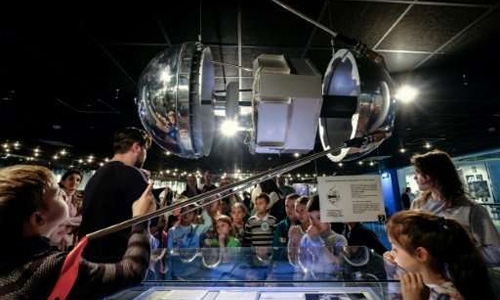Sputnik, the tiny sphere that launched the space race
Korolyov : When the Soviet Union launched the first artificial satellite 60 years ago, it marked both the beginning of space exploration and the start of a race between Moscow and Washington.
Sputnik, the tiny silver sphere with four spider leg-like antennae, showed off Soviet technological prowess.
But German scientists -- who had worked on Adolf Hitler's rocket projects and brought to the USSR after the war -- were the ones who stood at the forefront of space achievement.
The founder of the Soviet space programme, Sergei Korolyov, worked with German scientists and fragments of the German FAU rocket to develop a new military missile, said Nikolai Shiganov, one of the scientists behind Soviet rocket R-7 which put Sputnik into orbit.
"The Korolyov bureau had to create an intercontinental rocket capable of carrying a hydrogen bomb to any point on the planet," Shiganov, now aged 97, told AFP in an interview.
As he worked for the military, Korolyov -- who spent six years in the Gulag -- dreamt of space conquest. But time was running out: one of the principal German engineers, Wernher von Braun, was already working for the Americans.
After three years of work and three rocket accidents, the fourth R-7 with a dummy warhead successfully hit its target in Kamchatka, in the Far East, in August 1957. The test was hailed as successful although the rocket head disintegrated in flight.
Creating a new rocket head would take six months, much too long as the Soviets wanted to pre-empt the launch of a US satellite in 1958. So Korolyov suggested creating a simple satellite made of two hemispheres containing sensors, a radio and a battery pack.
In just two months, the apparatus measuring 58 centimetres (22 inches) in diameter and weighing 63.8 kilogrammes (141 pounds) was ready, remembered Shiganov, whose lab created the aluminium alloy and came up with a new welding technique used to make the Sputnik and the R-7.
Related Posts

